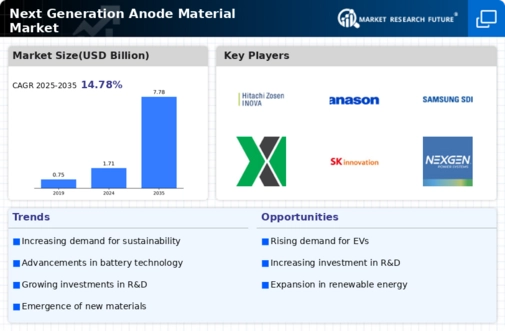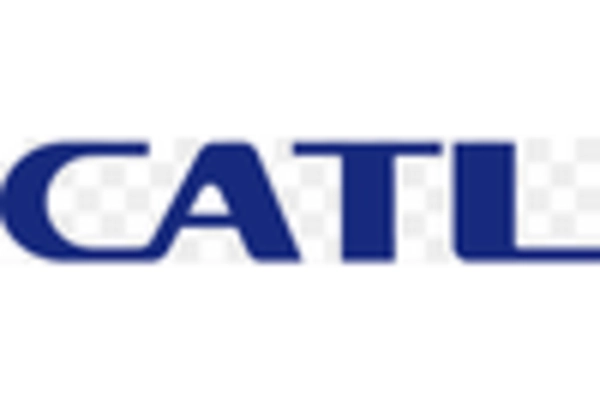Advancements in Battery Technology
Technological advancements in battery technology are significantly influencing the Next Generation Anode Material Market. Innovations such as silicon-based anodes and lithium-sulfur batteries are emerging as viable alternatives to traditional graphite anodes. These materials offer higher energy densities and improved cycle life, which are critical for applications in consumer electronics and renewable energy storage. The market for lithium-ion batteries is expected to reach USD 100 billion by 2026, driven by these advancements. As manufacturers seek to enhance battery performance, the demand for next-generation anode materials is anticipated to rise, thereby propelling the growth of the Next Generation Anode Material Market.
Consumer Electronics Market Growth
The expansion of the consumer electronics market is driving demand for advanced battery technologies, thereby impacting the Next Generation Anode Material Market. As devices become more sophisticated, the need for batteries with higher energy densities and faster charging capabilities is paramount. The consumer electronics sector is expected to grow at a CAGR of around 10% through 2026, leading to increased investments in next-generation anode materials. Manufacturers are focusing on developing materials that can support the performance demands of smartphones, laptops, and other portable devices. This growth in consumer electronics is likely to create new opportunities for the Next Generation Anode Material Market, as it seeks to provide innovative solutions to meet evolving consumer needs.
Growing Energy Storage Applications
The rising need for energy storage solutions is a significant driver for the Next Generation Anode Material Market. With the increasing integration of renewable energy sources, such as solar and wind, the demand for efficient energy storage systems is escalating. Advanced anode materials play a crucial role in enhancing the performance of batteries used in these applications. The energy storage market is projected to grow at a CAGR of over 25% through 2030, indicating a robust demand for innovative anode materials. This trend suggests that the Next Generation Anode Material Market will benefit from the expanding energy storage sector, as manufacturers develop materials that meet the specific requirements of these applications.
Rising Demand for Electric Vehicles
The increasing adoption of electric vehicles (EVs) is a primary driver for the Next Generation Anode Material Market. As consumers and manufacturers alike prioritize sustainability, the demand for high-performance batteries has surged. In 2025, the EV market is projected to grow at a compound annual growth rate (CAGR) of approximately 20%, necessitating advanced anode materials that enhance energy density and charging speed. This trend compels manufacturers to innovate and invest in next-generation anode materials, which are essential for meeting the performance expectations of modern EVs. Consequently, the Next Generation Anode Material Market is likely to experience substantial growth as it aligns with the evolving needs of the automotive sector.
Government Regulations and Incentives
Government regulations aimed at reducing carbon emissions are fostering growth in the Next Generation Anode Material Market. Many countries are implementing stringent policies to promote the use of clean energy technologies, including electric vehicles and renewable energy storage systems. Incentives such as tax credits and subsidies for EV purchases are encouraging consumers to transition to electric mobility. As a result, the demand for high-performance batteries, which rely on advanced anode materials, is expected to increase. This regulatory environment creates a favorable landscape for the Next Generation Anode Material Market, as manufacturers align their product offerings with governmental sustainability goals.

















Leave a Comment